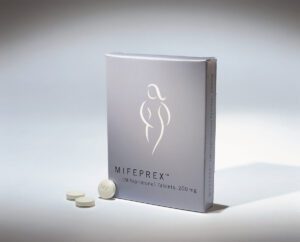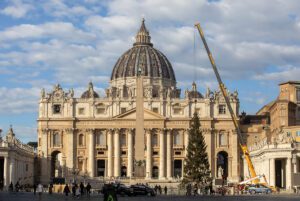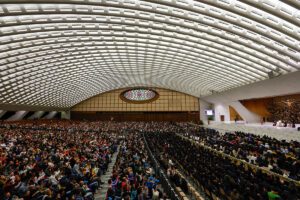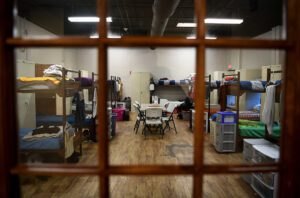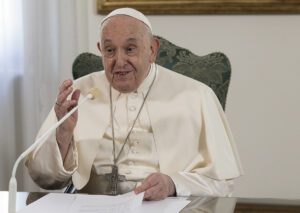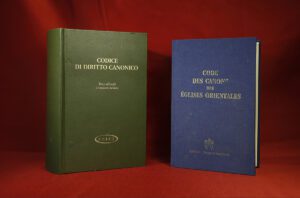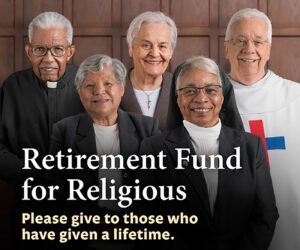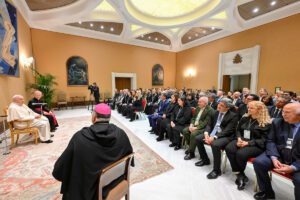VATICAN CITY (CNS) – Pope Francis said he has decided to be buried in Rome’s Basilica of St. Mary Major instead of in St. Peter’s Basilica at the Vatican and that he has simplified the rites for a papal funeral.
In a Dec. 12 interview with Mexican news outlet N+, the pope, in good humor, discussed plans for his own funeral as well as the trips he still hopes to complete during his pontificate.
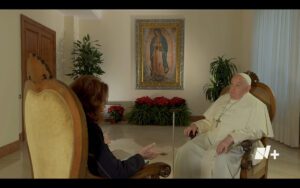
Still recovering from what he described as bronchitis that has affected him since late November – prompting him to cancel a planned trip to the United Arab Emirates – the pope said he feels “quite well” physically and continues to improve. Yet asked if people should be concerned about his health, he responded, “Yes, a little bit, yes. I need them to pray for my health.”
The pope said he had already discussed preparations for a papal funeral with his master of liturgical ceremonies, Archbishop Diego Giovanni Ravelli. “We simplified them quite a bit,” he said, and jokingly added that “I will premiere the new ritual.”
Pope Francis celebrated the funeral Mass for Pope Benedict XVI in January 2023 following a rite based on, but not identical to, a papal funeral, since Pope Benedict was not a reigning pope at the time of his death.
Breaking with recent tradition, Pope Francis said he has chosen to be buried at the Basilica of St. Mary Major because of his “very strong connection” with the church. Pope Leo XIII, who died in 1903, was the last pope not buried at St. Peter’s Basilica; Pope Leo’s tomb is in the Basilica of St. John Lateran in Rome. Six popes are buried at St. Mary Major; the last to be interred there was Pope Clement IX in 1669.
Pope Francis said he wants to be buried in the Marian basilica because “it is my great devotion,” adding that he would visit St. Mary Major on Sunday mornings when he traveled to Rome before becoming pope. Pope Francis often prays before the icon “Salus Populi Romani” (“health of the Roman people”) displayed in the basilica before and after his international trips to entrust his safety to Mary.
“The place is already prepared,” he said.
Asked about his future travels, the pope said that a trip to Belgium is “certain” and that two other trips, to Polynesia and Argentina, are pending.
In a statement published Dec. 13, the Belgian bishops’ conference said Pope Francis will visit in 2024 to mark the 600th anniversary of the country’s two prominent Catholic universities.
He added that despite being publicly critical of Pope Francis, Argentina’s new president, Javier Milei, did invite the pope to visit Argentina. “It is important to distinguish between what a politician says on the campaign trail and what he or she will actually do afterward,” the pope said.
But he added that any long-distance trips will have to be “rethought” due to his age and limited mobility. Just days before his 87th birthday Dec. 17, Pope Francis said that “old age doesn’t come alone, old age doesn’t put on makeup, it comes as it is.”
“The limit that one is given at the end of the day, when everything here ends and something else begins, matures you a lot in old age,” he said. “It’s nice.”

